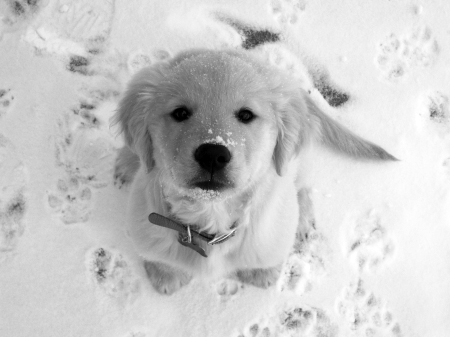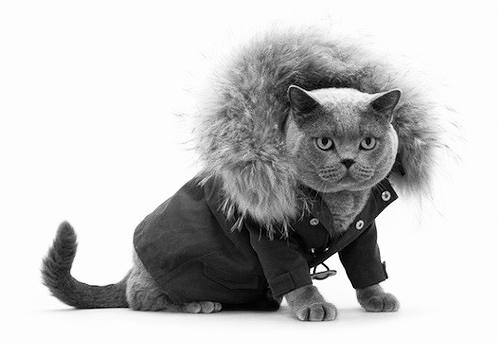
When temperatures drop, humans are not the only ones who feel the chill. Cold weather also can take its toll on animals, including dogs, cats and birds. Protecting pets when winter arrives involves modifying care tactics.
A major winter snowfall or simply a snap of cold weather can cause many problems for pets. Much like humans, dogs and cats can experience frostbite on extremities when subjected to cold temperatures. Ears, noses and paws all may bear the brunt of cold weather, increasing the risk of injury.
Provide warm shelter
Although it may appear that pets are well insulated against cold temperatures, fur or feathers do not make pets impervious to the cold. According to the ASPCA, fur wetted by snow may not dry quickly, putting animals at risk for a chill or even hypothermia. As a precautionary measure, keep companion animals inside when temperatures drop below 30*F.
If yours is an outside dog, be sure that he or she is equipped with dry, draft-free shelter. A dog house that is too large will not retain heat, so keep this in mind. Reduce wind chill by placing the dog house where it will not be in the direct line of wind. You may want to think about keeping the dog in an insulated shed or garage if you prefer not to move the pet inside.
Cats can easily freeze while outdoors; therefore, it is safer to keep them inside. Also, outdoors a cat may seek unsafe shelter, such as under the hoods of cars where they can be injured or killed if the car is started.
 Dress warmly
Dress warmly
A mammal’s system for regulating heat can be compromised when there is excessive cold. No matter its type of fur, a dog or cat may not be able to tolerate long periods of cold weather, unless it is a breed that was specifically bred for remaining outdoors in the cold, like a Malamute or Husky. When venturing outside, consider the use of a sweater or vest on short-haired dogs, but keep an eye on the pet. Wearing a coat doesn’t mean he should be left outdoors unattended.
Cats probably will not tolerate any type of clothing. If going outdoors to a vet appointment, use a carrier that is insulated from the cold with thick blankets.
Limit drafts
Address drafts around the house, which will increase your comfort and that of your companion animals. Dogs and cats lie on the ground, where colder air tends to collect. It may be several degrees cooler near the floor where they reside. Check windows and doors for drafts. If repairs or replacements aren’t financially possible, consider the use of draft guards or insulating curtains.
These measures also will protect pet birds. Most birds that are kept as pets are from tropical climates and cannot tolerate severe colder temperatures. Reduce risk of illness by keeping birds away from drafty windows and doors that open and close frequently during the winter.
Keep them leashed
Many dogs like to frolic in the snow, but snow can cause a pooch to lose his scent on the ground and get lost. A dog also may run off and get smothered by tall snowdrifts or slip through thin ice when not being able to gauge its surroundings. It is best to keep dogs on leashes during any type of inclement weather.
Be mindful of pets young and old
Puppies and kittens as well as older dogs and cats may be less tolerant of colder weather. Young animals are lacking the fat stores and thick coats of their adult counterparts that can help protect them against the cold. Housebreaking a puppy during the cold weather could be challenging.
Senior dogs may feel aches and pains from the cold, which can irritate existing conditions like arthritis. Limit their time outdoors to bathroom breaks.
Remove chemical poisons
Antifreeze and specialized non-icing window cleaners used in automobiles are commonly used in winter. These chemicals are often sweet to the smell and taste and very attractive to curious pets. But only a few laps of antifreeze can be deadly.
Keep any dangerous winterizing chemicals — even salt used to melt snow — away from pets to avoid accidental ingestion.
Provide extra food and water
Pets need extra calories in order to keep their bodies warm in the cold weather. You may need to feed them a little extra during the winter. Extra water may also be necessary when the pet’s metabolism is working harder.
If a pet is kept outdoors, be sure to check if its water has frozen and replace it frequently.
Watch for symptoms of hypothermia
Even well-meaning pet owners may be unaware if their pet is suffering from the effects of too much cold. Here are some symptoms of hypothermia.
• violent shivering, followed by listlessness
• weak pulse
• lethargy
• muscle stiffness
• problems breathing
• lack of appetite
• rectal temperature below 98*F
• coma
• cardiac arrest
Companion animals may experience anything from discomfort to serious problems when cold weather arrives. Take precautions to keep pets safe and healthy all winter long.
